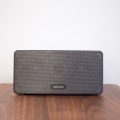Seeing as there is an entire vinyl boom currently going on in the western world, there has never been a better time to learn about the various minutiae of record collecting, especially the difference between direct drive vs belt drive turntables.
This, like so many other small gripes, might seem like just that, but can actually have a strong and significant impact on your experience with a turntable.
Despite the fact that you are likely never to come across these inner machinations, they have an obvious and immediate effect of the world of the turntable above, as well as the way that the turntable spins and plays your chosen record!
If it is so important and plays such an important role in the turntable’s existence and output, then surely it is worth learning about, no?
Strap in, prepare a hot beverage, and get your turntable sat beside you, and let us explore its inner machinations. If you do not have a turntable yet, and are in fact here to learn which to purchase and which motor ought to be within, then look no further! Hot beverage is, of course, not mandatory, though it certainly helps!
Table of Contents
Overview of Turntable Drive Systems
At the core of any record player is the drive system – the mechanical design that rotates the platter to spin your vinyl.
There are four main options used over the years, which are:
- Belt drive – An elastic belt connects the motor to the platter to spin it.
- Direct drive – The platter is directly attached to the motor.
- Rim drive – The motor powers a tire contacting the rim of the platter to spin it.
- Idler wheel drive – An intermediate wheel is sandwiched between the motor and platter.
Belt and direct drive dominance covers most vinyl playback needs – with the right one for you depending on your priorities like sound quality, reliability, or affordability when building a hi-fi stereo system or mixing booth. However, some niche niche turntable designs like rim drive or idler wheel drive, although less common today, still exist.
Understanding these different drive systems is helpful for figuring out which turntable is best suited to your needs and budget.
So, What Exactly is a Belt Drive Turntable?
Pop open the hood of any turntable and you are more than likely going to come across either one of these turntable mechanisms beneath, belt drive vs direct drive turntables, so if you know how they work you’re more likely going to be able to remedy your own record player should the time come for it.
Some turntables have an electric motor mounted within their main body that is connected to a rubber belt, a literal fusion of the digital and analog. The inner motor, powered by electricity from the plug, turns the rubber belt which, connected to the platter atop, spins the disc at the desired speed. To change the playback speed is simply to change the input to this motor, how quickly or slowly it spins.
There is much contention among vinyl record collectors and enthusiasts as to the relevance of a belt drive turntable in this modern age of electronic means. Many would be tempted to err on the side of the modern, though with such an antiquated format of listening to music this seems a little backward.
Belt drive enthusiasts would be inclined to think inversely, to tell you that the addition of a belt drive, made as it usually is of rubber, actually dampens extraneous vibrations, absorbing the shock of vibrations from outside sources. This is particularly useful if your listening environment isn’t exactly the most sanctimonious atmosphere, if you are constantly hosting visitors who are less than considerate of the sensitive nature of the turntable at work.
The rubber belt drive thus absorbs the shock of these outside factors, preventing as best it can the transmission of the extraneous vibrations to the spinning of the turntable platter, reducing the occurrence of skipping caused by said vibrations.
How Does Belt Drive Turntable Work?
When it comes to playing records, belt drive turntables are a very common design and use a simple yet effective drive system. As the name suggests, these turntables utilize an elastic belt, usually made of rubber, to connect the motor to the platter in order to spin it.
The motor itself is positioned below and offset from the center of the turntable. This positioning plays an important role in isolating any vibrations from the motor, ensuring they don’t transfer to the platter or record. The elastic belt connects around the motor’s drive pulley and also wraps around the underside edge of the platter. When powered on, the motor spins its pulley which drives the belt, transmitting rotational force directly into the platter.
But for most vinyl enthusiasts listening at home, a quality belt drive turntable provides excellent performance at reasonable prices. Their cleverly simple drive design focuses on silent operation and keeping any vibrations away from the record itself – which is exactly what you want for the best sound quality when playing your favorite albums.
What’s a Direct Drive Turntable?
More modern models of the turntable, on the other hand, use a similar internal mechanism, though one that altogether negates the rubber belt, which some consider simply too antiquated for their needs. So, instead of a rubber belt acting as the intermediary between the motor and the spinning of the turntable platter, the motor is, in the case of direct drive turntables, connected directly to the platter itself.
This has various benefits in to the latter in the diorama of belt drive vs direct drive turntables. A central pull of using a direct drive turntable instead of a belt drive turntable is the fact that the former has a far more accurate control over the speed of the turntable; speeds will be more consistent for the platter though with the obvious downside of added vibrations, what with the lack of a rubber belt to absorb the shocks.
However, the direct connection between the motor and the platter means that the direct drive turntable is perfect for immediate reverse playback, and thus good for scratching as popularised in classic hip hop sounds. It is fairly common to find these kinds of drives on turntables used by professional disc jockeys who are looking to affect the spinning of the turntable more accurately for musical effect.
Needless to say, these vibrations can have a vastly detrimental effect on the sound quality, distorting the fidelity and even skipping over whole chunks of the record if the vibrations are strong enough.
How Does Direct Drive Turntable Work?
In contrast to belt drive turntables, direct drive record players have a very different internal drive design. As the name suggests, the platter is connected directly to the motor in direct drive turntables. This allows the motor to spin the platter directly without any belt involved.
The motor is situated right below the center of the platter. This direct contact eliminates any belt slippage issues and provides excellent speed consistency. It also delivers higher torque – the rotational power that gets the platter spinning quickly from standstill.
For vinyl DJ mixing, direct drive turntables reign supreme thanks to their torque, control and reliability. But audiophiles sometimes prefer belt drive isolation for home listening. Overall, the direct coupling of motor and platter in this design prioritizes speed stability and power over damping.
Benefits of a Belt Drive Turntable
There are benefits and disadvantages to both sides of the diorama between belt drive vs direct drive turntables, and this is true also for the belt drive turntable. It is a classic, the original way to do it, and has thus been around since the beginning of vinyl record collecting, period. It was even part of some of the first record players, and since the record players are a hallowed stepping stone in the development of recorded sound, the belt drive has seen its fair share of discoveries and happenings.
Quieter; Protection from Vibrations
Thus, any vibrations from the surrounding environment will be transferred extraneously to the stylus, which then amplifies these vibrations into audible sound, a usually unpleasant noise that can disrupt the listening experience of the recording. Since belt drive turntables remove the vibration source of the motor away from the platter, far less noise is transferred from one to the other.
Since the motor is housed further away from the platter, there is inherently less mechanical resonance transferred from the motor to said platter. Since the platter is essentially just a big vibration source, this makes a huge difference, for the platter needs to be somewhat loose in order to spin properly, but taut enough that the stylus riding atop is not subjected to too many vibrations in the process of playing the record in question.
The motor is usually off to the side and isolated, and other extraneous vibrations that might transfer from other places are blunted and smoothed out by the belt inside, which is usually made of rubber, a natural absorber of such things.
Simpler to Operate
This is not guaranteed, though generally belt drive turntables tend to be easier to operate than direct drive turntables, owing to the simplicity of the various mechanisms within. The main component is simply a rubber belt that grips the platter and spins it at a set speed, that is about it. And it is precisely this simplicity that so many audiophiles cherish and herald as a god send, in comparison to the direct drive turntables. No matter your skill or experience level, you can’t seem to go wrong with the inherent simplicity within.
Such turntables are designed with listening to music in mind, and so prioritise this is as an absolute must at all costs. Sound quality and listening are typically the most important parts of belt drive turntables, and so the listening experience and the ease of use are always prized over other factors, such as those that direct drive turntables cherish instead.
Downsides of a Belt Drive Turntable
For all its benefits with regards to the absorption of vibrations, the belt drive turntable is certainly not without its cons in the diorama of belt drive vs direct drive turntables. Being just a thin length of rubber in a circular band, the belt drive isn’t exactly the most structurally sound engine component, very easily falling prey to the eventual fate of all machine components, hurled onto the great cosmic waste pile at the edge of the industrial revolution.
This fate can come in a variety of guises: the rubber belt might be too tight to begin with and thus quickly wear out against the various cogs and mechanisms inside the turntable, causing too much friction against the internal motors which they can’t overcome; the belt can also be too loose, too slack, meaning the belt itself cannot exercise enough grip on the motors to enact a sufficient amount of tension on the turntable spinning, from the motor to the platter.
Similarly, a drive belt might simply, through seeing lots of use, wear down of its own accord, without there being anything inherently wrong with the rubber belt itself. In these cases, its very common for the rubber belt to either lack the adequate friction to properly turn the platter and the disc atop, or simply to be cut altogether, in dire need of a replacement.
Temperamental Components
The rubber belt might be too tight to begin with and thus quickly wear out against the various cogs and mechanisms inside the turntable, causing too much friction against the internal motors which they can’t overcome. Similarly, the belt can also be too loose, too slack, meaning the belt itself cannot exercise enough grip on the motors to enact a sufficient amount of tension on the turntable spinning, from the motor to the platter.
Either way, the belt drive within can cause major issues in getting your sound from disc to earholes. The former within the diorama of belt drive vs direct drive turntables can prove a real hassle in the fragility and minuteness of the components. Though relatively easy to replace, this can still be a real pain to have to do often, if it does indeed occur often enough to frustrate.
Lack of Freedom to Manipulate
And this is precisely what the direct drive is so good at. Where the belt drive turntable offers forth outstanding efforts in terms of audiophilia and a ‘pure’ listening experience, the direct drive excels in offering disc jockeys across the whole spectrum of experience the opportunity to manipulate the audio on their discs to their heart’s content.
For many, though, this is perfectly fine. Beginners, for instance, unless they are getting into record collecting in order to scratch or manipulate their discs, are not going to miss this aspect, as it seeks to inherently complicate everything about it.

However, many collectors will say that, if you are going to want to DJ and DJ properly as in with decks, then chances are you will want to invest in a direct drive turntable, if only to invest some time in enhancing your technique.
Benefits of a Direct Drive Turntable
There are, of course, inherent benefits that anyone should consider weighing up when looking into purchasing or investing in a direct drive turntable, when seeking to take a side in the diorama between belt drive vs direct drive turntables. These should be weighed up with every constitution of one’s mind before going ahead and making a serious purchase.
Though, the direct drive is of serious benefit to disc jockeys and the like, there are many who would, in fact, stand by the belt drive for its superior audio quality etc. Most direct drives are intended for this audio manipulation, though there are a surprising amount that are not, and are purely designed in a coincidentally similar way, though coming at it with the intention of superior audio quality.
Perfect for Manipulation
This is what such direct drive turntables do best, and what truly sets them apart from their belt drive brethren. In the field of vinyl disc manipulation, there is simply no match. Since, the motor is directly attached to the platter, there is little to no room for error, meaning that the platter can be manipulated to the heart’s content of the disc jockey in question, all the while keeping up and adjusting its coordinates accordingly.
For this reason, it is the turntable of choice among many, many disc jockeys, enabling them to spin their favorite and chosen discs, and even scratch them live. without fear of their turntable not being able to keep up with the sheer speed of their fingers against the grain of the vinyl. There is so little room even between the motor and the platter, a physicality which translates to the marginal room for error in direct drive turntables’ response to human manipulation.
Accurate and Consistent
Also because of the inbuilt direct drive, these kinds of turntables are purported to be far more accurate than their belt drive brethren. This is mainly quantified in terms of the speed at which they spin. Where the belt drive turntable is said to slacken and slow down to imperceptible (though quantifiable) degrees, the direct drive does no such thing, there being such a marginal gap between the motor and the platter, meaning that there is hardly any room for error.
Yet, this is often debated among vinyl record collectors and audiophiles, despite the fact that the speeds can be measured, and thus quantified and compared with one another. Though this is scarcely negligible to the human ear, this makes a huge difference if you are a disc jockey in a context where you are intending to mix two or more discs simultaneously whose inner workings are inherently rhythmic.
Disadvantages of a Direct Drive Turntable
For all their benefits, the direct drive turntable can certainly host its own fair share of weaknesses in the diorama of belt drive vs direct drive turntables, no matter how antiquated a piece of technology it may seem. The direct drive turntable, in fact, comes along with its own set of problems, some of which have already been elucidated above.
In eliding the belt altogether, there is a more complex relationship between the drive motor and the turntable platter, no intermediary being present to negotiate between the two. Very often, contact between the motor and the platter itself can come to a complete stand still. Halts in communication between the two are caused more commonly by technological and mechanical jams.
Since this is inherently a more complex mechanism, I would not recommend involving yourself too deeply with the inner mechanisms without the help of a licensed professional, for tinkering and fondling the inner workings in this way could very easily damage the turntable beyond repair, especially painful when it might only have needed a little help beforehand.
Inferior Sound Quality; Vibrations
Since the motor is housed close to the platter, there is inherently more mechanical resonance transferred from the motor to said platter. And because the platter is essentially just a big vibration source, this makes a huge difference, for the platter needs to be somewhat loose in order to spin properly, but taut enough that the stylus riding atop is not subjected to too many vibrations in the process of playing the record in question.
Thus, any vibrations from the surrounding environment will be transferred extraneously to the stylus, which then amplifies these vibrations into audible sound, a usually unpleasant noise that can disrupt the listening experience of the recording. So, because direct drive turntables have the vibration source of the motor adjoined to the platter, far more noise is transferred from one to the other than it would be in a belt drive turntable.
In the latter, the motor is usually off to the side and isolated, and other extraneous vibrations that might transfer from other places are blunted and smoothed out by the belt inside, which is usually made of rubber, a natural absorber of such things, none of which can realistically occur in the inner mechanisms of a direct drive turntable.
Wieldy and Sometimes Complicated
Though not universally guaranteed, generally direct drive turntables tend to be more difficult to operate than belt drive turntables, owing to the inherently more complex nature of the various mechanisms within. The main component of a belt drive turntable is simply a rubber belt that grips the platter and spins it at a set speed, that is about it. A direct drive turntable, by contrast, is so constructed so as to allow the disc jockey full control to manipulate the record however they see fit, and thus there are more buttons and dials to familiarise oneself with.
Such turntables are designed with manipulation of music in mind, and so prioritise this is as an absolute must at all costs. Sound quality and listening are typically the second most important parts of direct drive turntables, and so the listening experience and the ease of use are always prized after other factors, such as audio manipulation and speed control etc.
Belt Drive vs Direct Drive Main Differences
While belt drive and direct drive turntables share some similarities, they diverge in several key areas:
- Motor design: Direct drive motor is directly coupled to the platter, belt drive uses an elastic belt
- Sound quality profile: Direct drive introduces more motor noise, belt drive provides more clarity/detail
- Cost and longevity differences: Direct drive costs more, but promises extended lifespan. Belt drive is cheaper upfront, but belts need periodic replacement.
Which One Should You Choose?
When shopping for a new turntable, one of the biggest decisions is whether to go with a direct drive or belt drive design. They each have their own pros and cons that make them better suited for certain applications and listening needs. Here’s a quick rundown of the key differences and recommendations based on use case:
- For casual listening – Belt drive turntables provide excellent sound quality without high costs. The vibration damping also helps improve clarity.
- For DJ use – Direct drive turntables are better suited for DJing thanks to higher torque, greater pitch control, and increased reliability during vinyl mixing.
- On a tight budget – Affordable belt drive turntable models can offer great value and performance for more cost-conscious buyers.
- For audiophile listening – High-end belt drives focus on minimizing noise and interference for the best fidelity. Some also allow upgrading to improve sound.
Final Tones: So What is the difference Between Direct Drive Vs Belt Drive Turntables?
So, there you have it! Hopefully this handy guide on the various differences and similarities between belt drive vs direct drive turntables has been of some use to you, and that you are better equipped to converse with others about these turntables out in the wild, or even to purchase one or two of your own!
FAQs Belt Drive Vs Direct Drive Turntables
Is direct drive or belt-drive better for turntables?
Pop open the hood of any turntable and you are more than likely going to come across either one of these turntable mechanisms beneath, belt drive vs direct drive turntables, so if you know how they work you’re more likely going to be able to remedy your own record player should the time come for it. Neither is inherently better than the other, they are simply better at doing certain things, and each places different things at the top of its priorities. A direct drive turntable places the manipulation of the record disc as its main function, whereas a belt drive turntable places sound reproduction and listening experience at the top.
Can you scratch with a belt drive turntable?
Yes, though they are certainly not very good at it, generally speaking, for they simply were not built for the task. In belt drive turntables the platter is turned by – yes, you guessed it! – a belt drive. This belt drive, if tampered with, will take an amount of time to get back up to speed. No matter how responsive it might be, there is always going to be a lag between the manipulation and the disc getting back to the original speed at which it was playing. Thus, fluid and elegant scratches by a disc jockey will be quickly lost to the downfalls of the belt drive turntable.
Do direct drive turntables have belts?
No, they do not, for they are powered with a direct drive. In contrast to a belt drive turntable, a direct drive turntable has its motor hooked up directly to the turntable platter, meaning there is very little, if any, lag between the stopping and starting of the turntable platter’s spinning. This has its benefits and its drawbacks, for many direct drive turntables suffer from more severe disruptions by noise than their belt drive brethren. This is usually because there is not only no belt to absorb external vibrations, but also because the motor is directly linked to the platter, and thus transmits any vibrations it feels directly to the platter and thus to the adjoining stylus when a record is spinning.
What is the difference between direct drive and belt-drive?
Some turntables have an electric motor mounted within their main body that is connected to a rubber belt, a literal fusion of the digital and analog. The inner motor, powered by electricity from the plug, turns the rubber belt which, connected to the platter atop, spins the disc at the desired speed. To change the playback speed is simply to change the input to this motor, how quickly or slowly it spins. This is a belt drive turntable. More modern models of the turntable, on the other hand, use a similar internal mechanism, though one that altogether negates the rubber belt, which some consider simply too antiquated for their needs. So, instead of a rubber belt acting as the intermediary between the motor and the spinning of the turntable platter, the motor is, in the case of direct drive turntables, connected directly to the platter itself.







